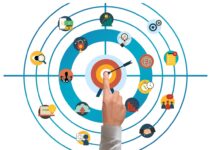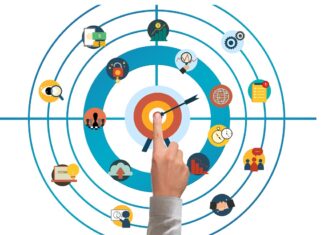Artificial Intelligence (AI) is rapidly transforming industries across the globe, and one of the key areas where AI is making a significant impact is in pattern recognition. Pattern recognition refers to the process of identifying regularities or trends in data, and AI, particularly machine learning algorithms, is enhancing this capability in ways that were previously unimaginable. From recognizing objects in images to identifying trends in financial data, AI is revolutionizing the way pattern recognition is applied. In this article, we will explore the ten critical insights you need to know about how AI will change pattern recognition and what this means for industries like healthcare, finance, security, and beyond.
1. AI Will Improve Accuracy and Precision in Pattern Recognition
One of the most notable changes AI brings to pattern recognition is a significant improvement in accuracy and precision. Traditional pattern recognition techniques often relied on rule-based systems or simple statistical methods, which had limitations in terms of handling complex, high-dimensional data. AI, especially deep learning, allows systems to learn from vast amounts of data, identifying patterns that humans might overlook. For example, AI-driven image recognition algorithms can now identify objects in images with far greater accuracy than traditional methods. By continuously training on large datasets, AI can refine its pattern recognition abilities, improving both its speed and its accuracy in identifying patterns across various domains.
2. AI Will Enable Real-Time Pattern Recognition
Another critical advancement is the ability of AI to perform real-time pattern recognition. As the amount of data being generated increases exponentially, there is an urgent need for systems that can analyze and identify patterns in real time. AI can process massive amounts of data quickly, enabling real-time pattern recognition across various industries. For example, in security, AI-powered surveillance systems can analyze video feeds in real-time to detect suspicious behavior or potential threats. Similarly, AI in financial markets can identify market trends or fraudulent transactions as they occur, allowing for quicker decision-making and more proactive responses.
3. AI Will Revolutionize Healthcare through Pattern Recognition
In the healthcare industry, AI is poised to significantly change how pattern recognition is used to diagnose and treat diseases. AI-powered systems can analyze medical images, such as X-rays, MRIs, and CT scans, to detect patterns that may indicate conditions like cancer, heart disease, or neurological disorders. By identifying these patterns with high accuracy, AI can help doctors make earlier, more informed decisions. Additionally, AI can analyze electronic health records (EHR) to find correlations between symptoms, treatments, and outcomes, leading to better patient care and personalized treatment plans. The application of AI in healthcare pattern recognition is helping to move towards more data-driven and precise medicine.
4. AI Will Improve Predictive Pattern Recognition
Pattern recognition isn’t just about identifying existing patterns; it’s also about predicting future trends. AI will enhance predictive pattern recognition, allowing systems to forecast future events or behaviors based on past data. For example, in retail, AI can analyze purchasing patterns to predict future demand for products, helping businesses optimize inventory management and marketing strategies. Similarly, AI can be used in financial markets to predict stock prices or market movements based on historical trends. Predictive pattern recognition is a game-changer for industries that rely on forecasting, helping businesses make data-driven decisions and gain a competitive edge.
5. AI Will Expand Pattern Recognition to Unstructured Data
Much of the data we deal with today is unstructured—text, images, video, and audio files—which traditional pattern recognition methods struggle to process effectively. However, AI has the potential to revolutionize pattern recognition in unstructured data. For example, natural language processing (NLP) allows AI to understand and extract meaningful patterns from text data, making it possible to analyze customer feedback, social media posts, or legal documents for trends. Similarly, AI-driven image and video recognition technologies can identify patterns in visual content, such as detecting objects, faces, or activities in images or videos. By unlocking the potential of unstructured data, AI will expand the scope and utility of pattern recognition across various industries.
6. AI Will Enable Autonomous Systems through Pattern Recognition
AI-powered pattern recognition is at the heart of autonomous systems, such as self-driving cars, drones, and robots. These systems rely on recognizing patterns in their environment to make decisions and navigate effectively. For instance, self-driving cars use AI to analyze sensor data from cameras, LIDAR, and radar to recognize patterns in the road, detect pedestrians, other vehicles, and traffic signals, and make real-time driving decisions. AI’s ability to learn and adapt to new patterns over time means that autonomous systems can continuously improve, becoming safer and more efficient as they encounter new scenarios. This capability is crucial for the widespread adoption of autonomous vehicles and other AI-powered autonomous systems.
7. AI Will Enhance Fraud Detection through Pattern Recognition
AI’s ability to detect anomalies and patterns in data will revolutionize fraud detection across various industries. In finance, AI can analyze transaction data to identify patterns indicative of fraudulent activity, such as unusual spending behavior or inconsistent account access. Machine learning algorithms can be trained to detect subtle patterns of fraud that might go unnoticed by traditional rule-based systems. In cybersecurity, AI can identify patterns in network traffic to detect potential security breaches or cyberattacks. By continuously analyzing data in real time, AI can provide more accurate and timely alerts, helping organizations prevent fraud and minimize risks.
8. AI Will Accelerate Scientific Research through Pattern Recognition
Pattern recognition is a critical component of scientific research, particularly in fields like genomics, astronomy, and physics. AI has the potential to accelerate scientific discovery by identifying complex patterns in large datasets that human researchers might struggle to analyze manually. For instance, in genomics, AI can analyze DNA sequences to identify patterns associated with genetic disorders or disease susceptibility. In astronomy, AI can help identify patterns in celestial data, leading to the discovery of new planets or stars. By automating and improving pattern recognition, AI can help researchers uncover insights more quickly, enabling faster scientific breakthroughs.
9. AI Will Revolutionize Marketing through Behavioral Pattern Recognition
Marketing strategies rely heavily on understanding customer behavior and predicting future trends. AI-driven pattern recognition is transforming how businesses approach marketing by enabling the analysis of customer behaviors, preferences, and interactions. AI can analyze customer data from websites, social media, and purchase history to identify patterns in consumer behavior. This information can be used to tailor personalized marketing campaigns, recommend products, and optimize advertising efforts. By recognizing patterns in consumer behavior, AI helps businesses create more targeted and effective marketing strategies, improving customer engagement and sales outcomes.
10. AI Will Foster Innovation in Pattern Recognition Techniques
As AI continues to evolve, it will drive innovation in pattern recognition techniques. Traditional pattern recognition methods often rely on predefined rules or heuristics, but AI enables systems to learn from data and adapt to new situations. This ability to self-improve through machine learning algorithms will lead to the development of more advanced and sophisticated pattern recognition techniques. For example, deep learning models, such as convolutional neural networks (CNNs) and recurrent neural networks (RNNs), have shown impressive results in recognizing patterns in complex data like images, speech, and text. As AI research progresses, new techniques and architectures will emerge, pushing the boundaries of what is possible in pattern recognition and opening up new applications across industries.
Conclusion
AI is transforming pattern recognition in profound ways, enhancing its accuracy, speed, and applicability across a wide range of industries. From healthcare and finance to marketing and autonomous systems, AI-powered pattern recognition is enabling businesses and organizations to make better decisions, detect fraud, personalize experiences, and accelerate scientific discoveries. As AI technology continues to evolve, its impact on pattern recognition will only grow, driving further innovation and offering new opportunities for industries to leverage the power of data. Understanding these critical insights about how AI will change pattern recognition is essential for staying ahead in an increasingly data-driven world.























